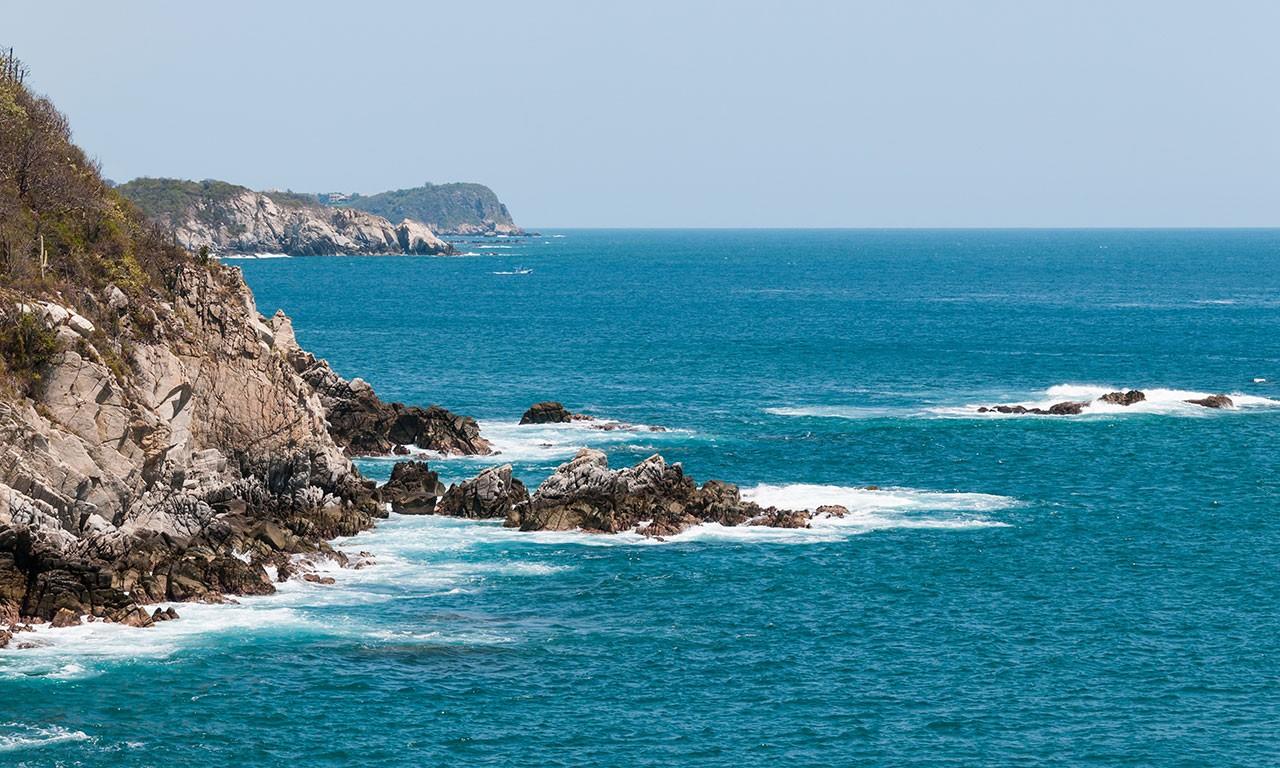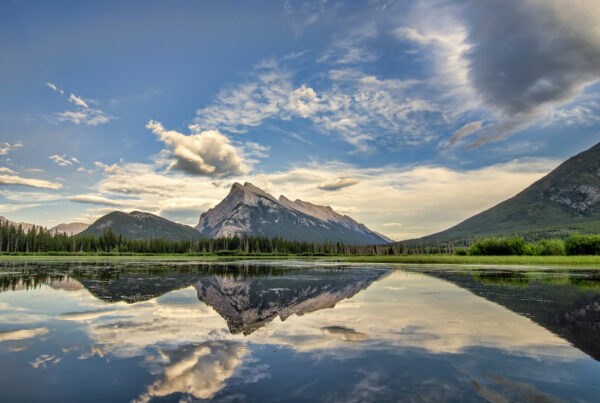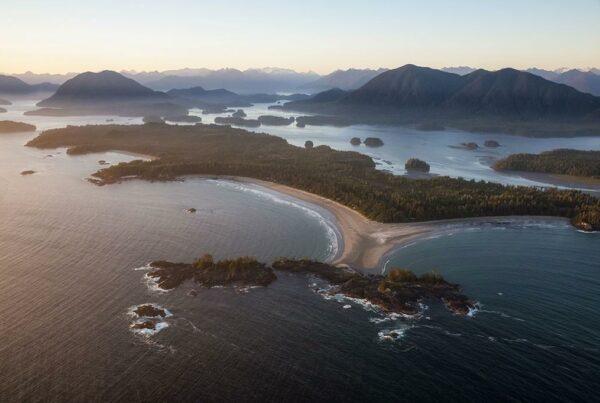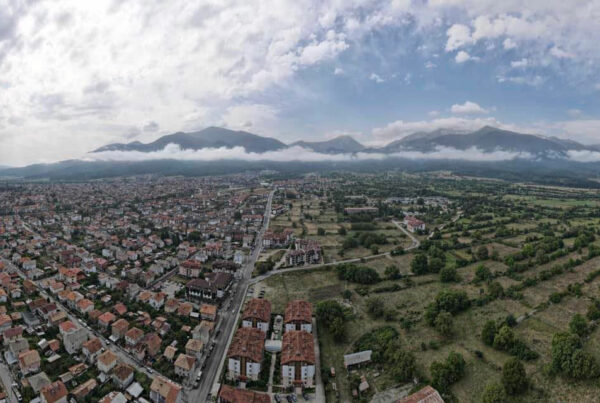The spectacular coast of Oaxaca offers the best beaches in Mexico to get away from the tourist crowds and be close to nature.
Thanks to the brand new highway from Oaxaca City in the Central Valley to the laid back surf town of Puerto Escondido, the Oaxacan Coast is about to get a lot more accessible.
This new highway through the rugged Sierra Madre de Oaxaca mountains will reduce the trip from Oaxaca City to Puerto Escondido from 6 hours to 2.5 hours (and make it a lot safer drive also).
Currently, the Oaxacan coast is not well-known by foreigners and over 80% of the tourists come from within Mexico.
However, with the new highway and the improving regional airports in Puerto Escondido and Huatulco this area is set for a major boom. Additionally, since the start of Pandemic the amount of foreigners living in Puerto Escondido as digital nomads has exploded since the Internet speeds and reliability are also starting to improve (not quite there yet though).
A Unspoiled Tropical Paradise
Unlike much more well-known Cancun on the eastern Yucatan coast, there is little “big box” tourism in Puerto Escondido, Huatulco and the rest of the Oaxacan Coast.
Instead, the Oaxacan Coast offers off-the-beaten track spots that attracts nature lovers, birdwatchers and surfers who flock to the legendary waves around the town of Puerto Escondido.
The state of Oaxaca is considered number one in Mexico in terms of biodiversity. It is the only place where you can travel less than 90 minutes from snorkelling on a coral reef to wandering in a lush cloud forest.
The Oaxacan coast is also considered one of the safest regions in Mexico for tourism. The latest U.S. State Department travel warnings for Mexico excludes the entire state of Oaxaca, including Huatulco, from any of its advisories.
The area is also renowned for having the world’s largest turtles. While human beings are one of the youngest species, turtles are one of the most ancient ones and they are highly revered in the local Zapoteca culture.
Natural Wonders of the Oaxacan Coast
Here are the must-see natural wonders for ecotourism and adventure along the coast of Oaxaca.
1. Huatulco National Park

Huatulco is an ecotourism hotspot with its 9 spectacular bays, 36 sandy beaches, 22 miles of coastline and 330 days of sunshine making it a near-perfect, all-year destination for enjoying the outdoors in a relatively unspoiled setting.
The nine scenic bays offer opportunities for swimming, boating, scuba diving, snorkeling, surfing, sailing and other water sports in protected areas off of the Pacific Ocean.
A national treasure, Huatulco National Park covers 29,000 acres and protects 9,000 species of plants, 700 species of birds, 470 species of reptiles and more than 260 species of fauna including white-tailed deer, armadillos and the world’s largest species of turtles.
Huatulco is the only resort area in Mexico with international Green Globe certification for sustainable tourism. There are no factories or industry and the mountains and lush jungle are filled with orchards and wildlife.
For outdoor enthusiasts, the area offers great opportunities for hiking, horseback riding, riding four-wheel motorized ATVs, bird watching, photography, and river rafting.
It is also renowned for its coral reefs and whale watching as well as the dolphin pods that live around the coast.
The local Zapoteca people still follow their ancient traditions and use local plants and mushrooms for their medicinal and healing properties.
2. Puerto Escondido’s Waves

Just outside of Puerto Escondido, you will find Laguna de Manialtepec, which is populated with millions of known dinoflagellate microorganisms which give off the natural phenomenon of Bioluminescence at night.
The lights or “brightness” in the water is the result of a chemical reaction between substances present in them which when combined, flash. When produced, a type of light is generated, which is called bioluminescence. They sparkle when the water is agitated by a boat, with the oars, with your hands, when it simply rains or when swimming.
The Oaxacan coast is also one of the safest regions in Mexico for tourism. The latest State Department travel warnings for Mexico excludes the entire state of Oaxaca, including Huatulco, from any of its advisories.
The Oaxacan coast is also one of the safest regions in Mexico for tourism. The latest State Department travel warnings for Mexico excludes the entire state of Oaxaca, including Huatulco, from any of its advisories.
The most legendary wave in Latin America is along Playa Zicatela in Puerto Escondido. Often referred to as the Mexican Pipeline, this is a legendary wave reserved for highly experienced surfers that draws an international surfing crowd.
It’s best to just watch the professional surfings at Zicatela Beach. For more gentle waves, there is Playa Carrizalillo.
3. Lagunas de Chacahua

Bathed in cool sea breezes and tropical sunshine, Lagunas de Chacahua has five massive lagoons with huge turtles, crocodiles and some of the best bird watching in Mexico along the Pacific migratory flyway.
There is excellent hiking and exploring opportunities here and many different types of vegetation, including swampland, deciduous forest, sub tropical broadleaf forest, mangroves, savannah, palm trees and coastal dunes.
So far 246 species of flowers and 189 species of animals have been documented in the national park.
Birds that can be found in Lagunas de Chacahua National Park include storks, herons, wild ducks, blue-winged teals, pelicans, and spoonbills.
Three species of turtles also visit the park to lay their eggs, including the largest turtles in the world.
4. Mazunte

Mazunte is famous for its sea turtles and the main attraction here is the Mexican National Turtle Center and the Cosméticos Naturales de Mazunte.
It is designated by Mexican government as a Pueblos Mágico, a select group of Mexican villages whose cultural, historical, or natural treasures have been deemed, well, magical.
The neighbouring fishing village of Puerto Angel is also very beautiful and the beach resort of Zipolite is breathtaking in its natural beauty and funky resorts El Alchemista.
Other excellent beaches in the area are Playa Mermejita, Playa Aragon and Playa Ventanilla.
This is probably the best spot in Mexico to study esoteric philosophy, yoga and meditation as there are a number of interesting schools in the area.
5. San José del Pacífico

Further up the road is San José del Pacífico, a charming like village clinging to the alpine mountainside at 8,000 feet above sea level that is renowned for its cloud forests and incredible mushroom biodiversity.
This town is famous for Temezcal ceremonies, which involve sweat lodges and a number of cleansing plants to refresh and renew your senses.
The hiking trails around the town offer some of the most beautiful views in Mexico and on a clear day you can see the Pacific Ocean 2500 m below from some of the best viewpoints.
6. Hagia Sofia Gardens

Not, it’s not the monument to Byzantium in modern day Istanbul, Turkey. Hagia Sofia comes from the Greek meaning “holy wisdom” and in Oaxaca the Hagia Sofia is a 320-acre agro-ecological project at an altitude of 850 – 1280 feet above sea level.
Throughout the Hagia Sofia gardens, the plants are labeled with scientific, Spanish, and Zapotec names.
During the Hagia Sofia Eco-Garden tours you get to taste exotic fruits from the region, explore your senses of smell on their interpretive trail called the “Path of Flowers” and explore the patterns and symmetry of a wide variety of flora and fauna.
You can refresh yourself after hiking and exploring by swimming in the Madalena River that flows down from the cloud forests above under the cascade of the La Campana waterfall.
7. Copalita

Coplita is an ancient city that was buried in the jungle about 10 minutes south of Huatulco.
This is an excellent place to learn about the local Zapoteca peoples and their very ancient history here on the Oaxacan coast.
There is an excellent hike in the Archaeological zone to a viewpoint of renowned surfing beach La Bocana Beach and the huge Copalita estuary where the river meets the Pacific Ocean.
8. Chipehua

Between the villages of Chipehua and Santa Cruz Bamba you will find some of the largest sand dunes in Central America that stand like a mountain above the Pacific Ocean.
There is also excellent off-the-beaten path surfing spots here like Playa Congrejo and the nearby center of Salina Cruz offers a lot of interesting places to explore including the massive Laguna Superior and a series of oceanside peninsulas on the migratory Pacific flyway for birds.
From here, you can easily access the spectacular national parks and trekking in the mountains of Chiapas and Oaxaca.
If you’re planning to visit the coast of Mexico’s beautiful state of Oaxaca then you don’t want to miss these natural wonders.
- Reconnect To Your Original Nature Through Awe And Wonder - April 17, 2024
- Pasqueflower: A Spring Wildflower That Symbolizes Rebirth - April 5, 2024
- Deep Embodiment And The Flow of Embodied Awareness - April 1, 2024



